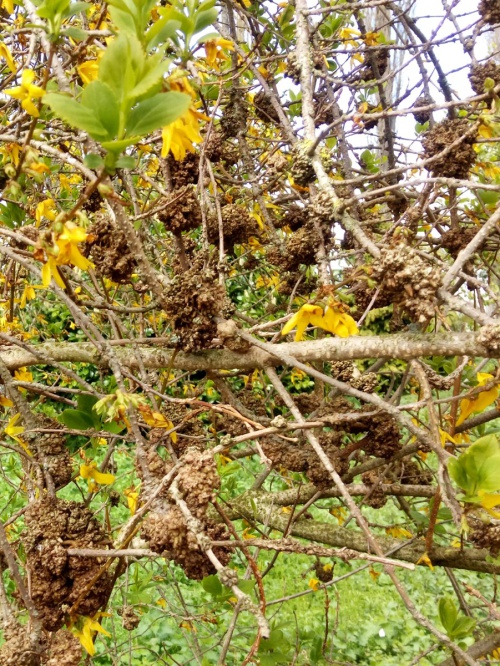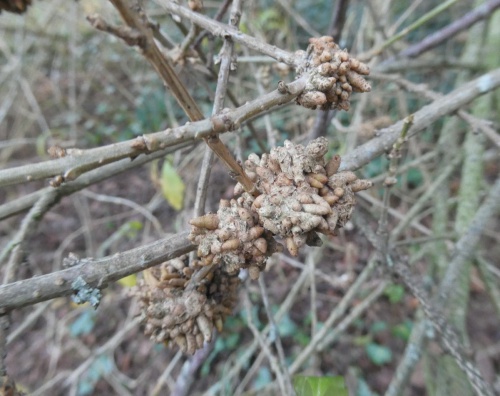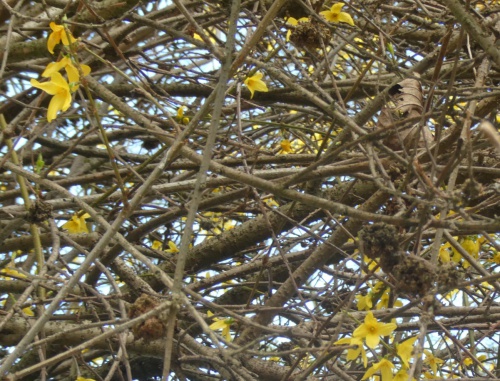Forsythia Knot-gall - Causer unknown (Forsythia Knot-gall)
Galls appear as clumps of nodule-like growths on shoots of affected Forsythia and are most noticeable when foliage is absent. Branch material beyond the galls usually becomes weak and eventually dies.
According to British Plant Gall (Redfern & Shirley, 2023) it is usually said to be caused by a Corynebacterium bacteria. However all attempts have failed to produce the galls on Forsythia by inoculation of the bacterium isolated from the galls. The causer has therefore not been proven. An alternative name for the bacterium is Rhodococcus fascians.
In the past, it has also been thought to be caused by a fungus, Phomopsis.
A Pseudomonas savastanoi bacterium, related to the one that is implicated in knot-galls on olives and cankers on ash, may also be involved. (https://www.ncbi.nlm.nih.gov/pmc/articles/PMC5478681/)
Its a horticultural pest, transferred by infected sap. To avoid transmitting to another plant, tools should be disinfected after pruning (Sally Cunningham, pers, comm).
Galls may be found wherever Forsythia occurs.
Galls may be found all year round.
It would seem to be fairly frequent, but true status in Britain is difficult to determine due to lack of records.
Status in Leicestershire and Rutland not known, but probably quite frequent.
Leicestershire & Rutland Map
Enter a town or village to see local records
MAP KEY:
Yellow squares = NBN records (all known data)
Coloured circles = NatureSpot records: 2025+ | 2020-2024 | pre-2020
UK Map
Species profile
- Species group:
- Algae, Bacteria, Virus
- Kingdom:
- Order:
- Family:
- Records on NatureSpot:
- 6
- First record:
- 06/02/2023 (Timms, Sue)
- Last record:
- 26/03/2025 (Pugh, Dylan)
Total records by month
% of records within its species group
10km squares with records
The latest images and records displayed below include those awaiting verification checks so we cannot guarantee that every identification is correct. Once accepted, the record displays a green tick.
In the Latest Records section, click on the header to sort A-Z, and again to sort Z-A. Use the header boxes to filter the list.







